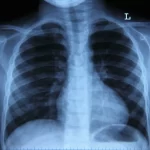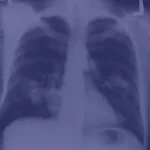Understanding Mesothelioma
Mesothelioma is a rare and aggressive type of cancer that affects the mesothelium. Malignant mesothelioma is most commonly linked to asbestos exposure and has a long latency period, often taking decades to develop symptoms. A diagnosis of mesothelioma may qualify you for an asbestos claim. Understanding the complexity of Malignant mesothelioma involves looking at its different types, causes, symptoms, treatments, and asbestos claim options.
Before the use of advanced microscopy techniques, Malignant mesothelioma was often diagnosed as a variant form of lung cancer. Scientists have since learned that mesothelioma affects the lining of organs in the chest and abdomen, primarily impacting the lungs (pleura), abdomen (peritoneum), and, in rare cases, the heart (pericardium) and testicles. Malignant mesothelioma, which develops in the thin layer of tissue, manifests in various forms, each with unique characteristics and challenges. Common symptoms include shortness of breath, chest pain, abdominal pain, and fluid buildup in the affected areas, such as pleural effusion in the chest cavity or ascites in the abdominal cavity.
Each year, around 3,000 new cases are reported in the United States, particularly in regions with heavy industrial activity, such as Michigan. These areas have a higher prevalence of asbestos use in industries like construction, manufacturing, and shipbuilding. Filing an asbestos claim in Michigan requires the knowledge and expertise of an experienced local attorney. Imaging scans, such as chest X-rays, computed tomography (CT) scans, and magnetic resonance imaging (MRI), are crucial for diagnosing mesothelioma. These imaging techniques help doctors determine the extent and location of tumors, guiding treatment decisions.
Types of Mesothelioma
Malignant mesothelioma is categorized based on the location of the tumors within the mesothelial lining. The four primary types are:
- Lung (Pleural Mesothelioma): This is the most common form, accounting for approximately 75% of all mesothelioma cases. It affects the pleura, the thin membrane surrounding the lungs, and lines the chest cavity. Symptoms include shortness of breath, chest pain, persistent cough, and pleural effusion (accumulation of fluid in the pleural space). Pleural mesothelioma can be particularly aggressive, often spreading to the chest wall, diaphragm, and other nearby organs.
- Abdominal (Peritoneal Mesothelioma): This type starts in the peritoneum, the lining of the abdominal cavity. It accounts for about 20-25% of mesothelioma cases. Symptoms include abdominal pain, swelling due to fluid buildup (ascites), weight loss, and loss of appetite. Peritoneal mesothelioma can lead to significant discomfort and digestive issues. Unlike Pleural mesothelioma, women make-up a larger percentage of peritoneal mesothelioma cases.
- Heart (Pericardial Mesothelioma): A rare form of mesothelioma, affects the pericardium, the lining around the heart. It represents less than 1% of all cases. Symptoms include chest pain, irregular heartbeats, difficulty breathing, and pericardial effusion (fluid accumulation around the heart). Due to its rarity and proximity to the heart, pericardial mesothelioma poses significant diagnostic and treatment challenges.
- Testicular Mesothelioma: The rarest form, found on the lining of the testicles (tunica vaginalis). It accounts for less than 1% of mesothelioma cases. Symptoms often include testicular lumps and swelling. Given its rarity, testicular mesothelioma is less studied, and treatment options are typically derived from approaches used for other types of mesothelioma.
All four types of mesothelioma may qualify you for an asbestos claim.
Categories Based on Cancer Cell Type
Malignant mesothelioma is further classified based on the type of cancer cells present. This classification helps determine the mesothelioma prognosis and treatment approach. The three main cell types are:
- Epithelioid: The most common cell type, making up 70-80% of cases. Unlike normal cells, Epithelioid cells are more uniform and tend to cluster together. This type generally has a better prognosis compared to the other cell types because it responds better to treatment. Epithelioid mesothelioma is often associated with a longer survival rate.
- Sarcomatous: Less common, accounting for about 10-20% of cases. Sarcomatous cells are spindle-shaped and spread more quickly. This type is more aggressive and less responsive to treatment, leading to a poorer prognosis. Sarcomatous mesothelioma often spreads to distant organs and tissues more rapidly.
- Biphasic: Comprising both epithelioid and sarcomatous cells, biphasic mesothelioma accounts for 10-20% of cases. The mesothelioma prognosis depends on the ratio of the two cell types, with a higher percentage of epithelioid cells generally indicating a better outcome. The treatment approach for biphasic mesothelioma is often tailored to the predominant cell type.
Causes and Risk Factors
A mesothelioma prognosis is predominantly caused by exposure to asbestos fibers. Asbestos is a naturally occurring mineral that is widely used in various industries due to its heat-resistant properties and durability. When inhaled or ingested asbestos fibers can become lodged in the mesothelium, causing inflammation and cell damage over time. A major factor for Malignant mesothelioma development is the intensity of asbestos exposure. Duration of asbestos exposure is another key factor.
Primary Causes:
- Asbestos Exposure: The primary cause of mesothelioma. Asbestos fibers can be inhaled or ingested, leading to their accumulation in the mesothelial lining of the lungs, abdomen, or other organs. The fibers cause chronic inflammation and genetic mutations, eventually leading to cancer. Some sources of asbestos exposure include everyday items such as drywall, talcum powder, floor tiles, shotgun shells, and a large number of other products.
- Occupational Exposure: Workers in industries such as construction, shipbuilding, automotive, and manufacturing are at higher risk due to the widespread use of asbestos in these fields. Safety measures and regulations have reduced exposure in recent years, but the long latency period means new cases continue to emerge from past exposure.
Secondary Causes:
- Secondary Exposure: Family members of asbestos workers can be exposed to fibers brought home on clothing, hair, and skin. Even minimal exposure can be sufficient to cause mesothelioma.
- Environmental Exposure: In some areas, where asbestos has been mined or manufactured the dust can pose a risk to residents. Disturbance of asbestos-containing materials due to demolition or manufacturing can release fibers into the air.
Risk Factors:
- Duration of Exposure: The longer the exposure to asbestos, the higher the risk of developing mesothelioma. Even brief or low-level exposure can be dangerous due to the cumulative effect of asbestos fibers.
- Intensity of Exposure: Greater amounts of exposure to asbestos can lead to a higher likelihood of disease. Even brief or low levels of exposure can be dangerous due to the accumulative effective asbestos fibers.
If you are unsure where your asbestos exposure occurred, the experts at Serling & Abramson, P.C. can help. With our immense database and experience, we can help you determine if your exposure qualifies you for an asbestos claim.
Development Duration
The latency period for mesothelioma is notably long, ranging from 20 to 50 years or more after initial exposure to asbestos. This extended latency period complicates early detection and underscores the importance of regular health monitoring for individuals with known asbestos exposure.
Signs and Symptoms
Malignant mesothelioma symptoms can vary depending on the type and stage of the disease. Common symptoms and signs of cancer include:
- Pleural Mesothelioma: Shortness of breath, chest pain, persistent cough, pleural effusion, and lumps under the skin of the chest.
- Peritoneal Mesothelioma: Abdominal pain, swelling, ascites, weight loss, nausea, and bowel obstruction.
- Pericardial Mesothelioma: Chest pain, irregular heartbeats, difficulty breathing, and pericardial effusion.
- Testicular Mesothelioma: Testicular lumps and swelling.
When it comes to treating people with cancer, early detection is crucial for patients with mesothelioma to receive effective treatment. However, the nonspecific nature of symptoms often leads to misdiagnosis or delayed diagnosis. People with mesothelioma are commonly misdiagnosed with pneumonia, bronchitis, irritable bowel syndrome, and heart disease. To assist in proper diagnosis, it is important to notify your doctor of asbestos exposure history.
Diagnosis and Treatment
Diagnosing Malignant mesothelioma involves several steps, including:
- Medical History and Physical Examination: A thorough medical history, including occupational and environmental exposure to asbestos, is essential. Physical examination may reveal signs of fluid buildup or lumps.
- Imaging Scans: Chest X-rays, CT scans, MRIs, and positron emission tomography (PET) scans are often used to search for signs of cancer. These scans provide detailed images of the affected areas, helping to identify the location and extent of tumors.
- Biopsy: Diagnosis of mesothelioma can be suspected with imaging but is confirmed with a biopsy. A tissue sample is taken for examination under a microscope to confirm the presence of cancer cells or abnormal tissue. Techniques include needle biopsy, thoracoscopy (for Pleural mesothelioma), laparoscopy (for peritoneal mesothelioma), and pericardiocentesis (for pericardial mesothelioma).
- Blood Tests: Biomarkers such as mesothelin-related peptides (SMRP) and fibulin-3 can assist in identifying signs of cancer, diagnosing mesothelioma, and monitoring treatment response.
Once you receive a diagnosis of mesothelioma, it is crucial to act quickly if you wish to pursue an asbestos claim. The statute of limitations dictates how much time an individual has to bring forward their asbestos claim.
Treatment Options
Types of treatment for Malignant mesothelioma depend on the type of advanced stage, and cell type of the cancer, as well as the patient's overall health. Common treatment options include:
- Surgery: Surgical removal of the tumor is often the first line of treatment. Procedures vary based on the cancer stage severity location:
- Pleurectomy/Decortication (P/D): Removal of part of the pleura and surrounding abnormal tissue.
- Extrapleural Pneumonectomy (EPP): Removal of an entire lung, part of the diaphragm, and surrounding tissues.
- Cytoreductive Surgery: Often used for peritoneal mesothelioma, it involves removing as much of the tumor as possible.
- Radiation Therapy: High-energy radiation is used to target and kill cancer cells. Radiation therapy is often used in combination with surgery or chemotherapy to improve outcomes and reduce symptoms.
- Chemotherapy: These drugs are given to people with cancer to kill cancer cells or stop their growth. Common drugs include cisplatin, pemetrexed, and carboplatin. Combination therapy with cisplatin and pemetrexed has shown significant improvement in survival rates.
- Immunotherapy: This treatment enhances the body's immune system to fight cancer. Drugs like nivolumab and ipilimumab have been used in combination to improve outcomes in mesothelioma patients.
- Targeted Therapy: Focuses on specific genetic changes in cancer cells. Drugs targeting the endothelial growth factor receptor (EGFR) and other pathways are being studied in clinical trials.
- Photodynamic Therapy (PDT): Uses light-sensitive drugs and light exposure to kill cancer cells. This approach is still under investigation but has shown promise in treating certain types of mesothelioma.
Considerations for Women with Mesothelioma
While mesothelioma is more common in men, about 25% of cases occur in women. Women might experience different symptoms. It's important for women to be aware of their potential exposure to asbestos, whether through occupational settings, secondary exposure from family members, or environmental sources.
Women with pleural mesothelioma may experience symptoms like coughing, chest pain, and pleural effusion. For peritoneal mesothelioma, symptoms can include abdominal pain, swelling, and bloating. Due to the nonspecific nature of these symptoms, women are sometimes misdiagnosed with other conditions, such as ovarian cancer or gastrointestinal disorders. Accurate medical history and awareness of asbestos exposure are crucial for timely diagnosis and treatment.
Current Research and Advances
Research into mesothelioma is ongoing, with efforts focused on improving early detection, treatment options, and overall survival rates. Key areas of research include:
- Combination Therapy: Studies on the combination of cisplatin with other drugs like ipilimumab and nivolumab show promising results in improving survival rates and reducing tumor growth.
- Photodynamic Therapy (PDT): This innovative approach uses light-sensitive drugs and light exposure to target and kill cancer cells. Ongoing clinical trials are exploring the effectiveness of PDT in combination with other treatments.
- Targeted Therapy: Research is focused on identifying specific genetic mutations and pathways involved in mesothelioma. Drugs targeting these pathways, such as EGFR inhibitors, are being tested in clinical trials.
- Immunotherapy: Enhancing the body's immune response to fight cancer is a promising area of research. Checkpoint inhibitors, like nivolumab and ipilimumab, are being studied for their effectiveness in treating mesothelioma.
- Gene Therapy: Investigating ways to modify genetic material within cancer cells to stop their growth and spread. Although still in the early stages, gene therapy holds potential for future treatments.
- Nanotechnology: Utilizing nanoparticles to deliver drugs directly to cancer cells, minimizing side effects and improving treatment efficacy.
Safety Measures and Compensation
Preventing asbestos exposure is crucial for reducing the risk of mesothelioma. Safety measures in industries, such as proper use of protective equipment and regular health checks, are essential. Monitoring and managing asbestos pollution, particularly in high-risk areas like asbestos textile mills and petroleum industries, can help prevent new cases.
For those affected by mesothelioma, legal options for compensation are available. Asbestos claims and lawsuits can provide financial support for medical expenses, lost wages, and other costs associated with the disease. Many mesothelioma patients have successfully obtained compensation through legal channels, particularly those with occupational and secondhand exposure to asbestos.
How can I help a loved one with mesothelioma?
Caring for a loved one with mesothelioma is an emotional experience. There are many resources available for caregivers who are experiencing a life-changing mesothelioma diagnosis.
If your loved one has passed away from mesothelioma, you can still pursue an asbestos claim on their behalf. The statute of limitations governs the amount of time the family member has to pursue an asbestos claim in this manner.
Conclusion
Mesothelioma is a complex and challenging disease with a long latency period. Asbestos exposure is the only known cause. Early detection, advanced treatment options, and ongoing research are crucial for improving patient outcomes and survival rates. Awareness of risk factors, symptoms, and the importance of medical history is vital for timely diagnosis and effective treatment.
Continued research and advancements in treatment offer hope for better outcomes and improved quality of life for mesothelioma patients. For more information and support, please visit the resource tab. Receiving an asbestos-related diagnosis may be a very overwhelming time for your family. Serling & Abramson, P.C. is here to listen to your story, review your exposure history, and assist you in discussing your legal options.
















